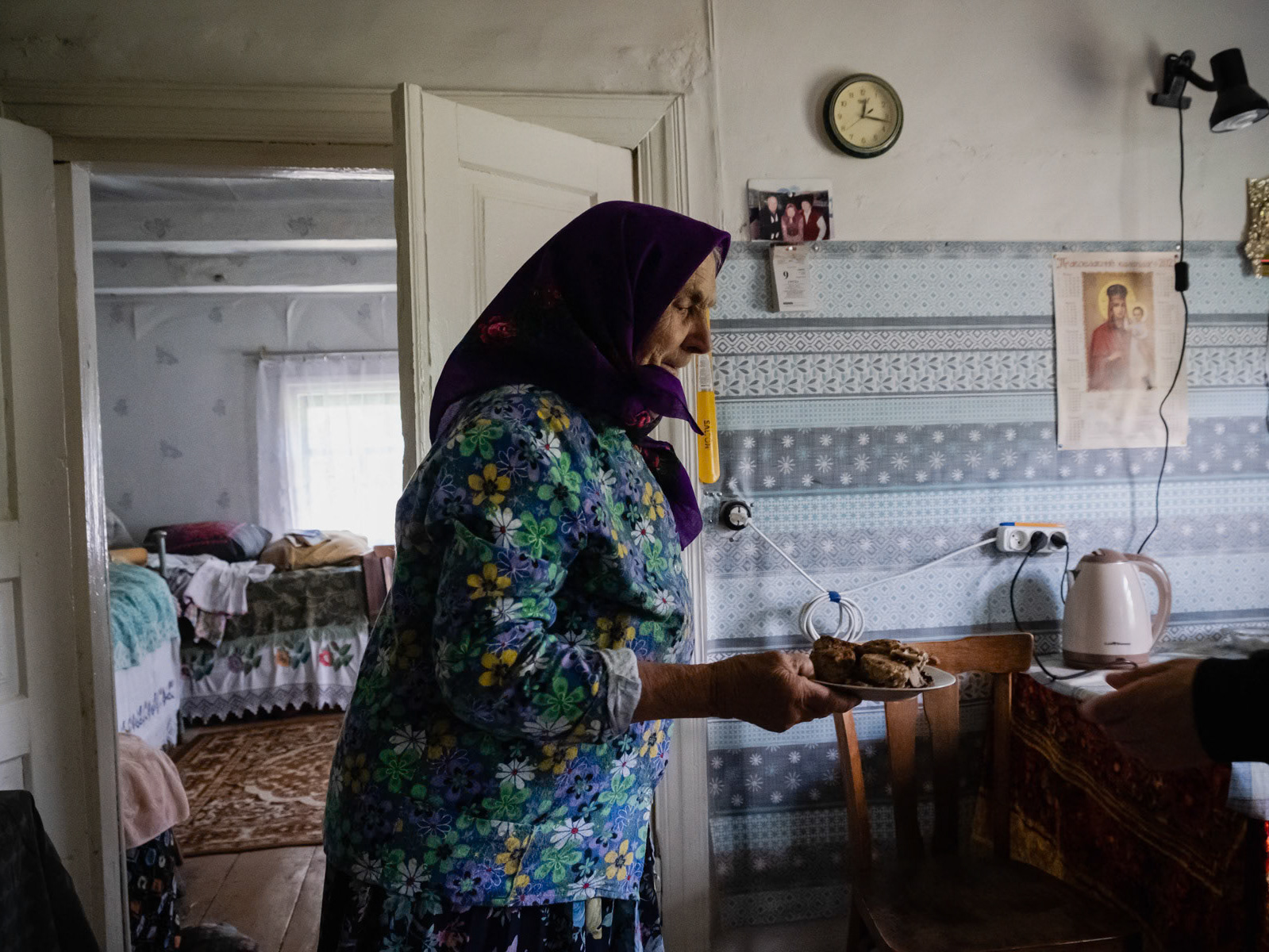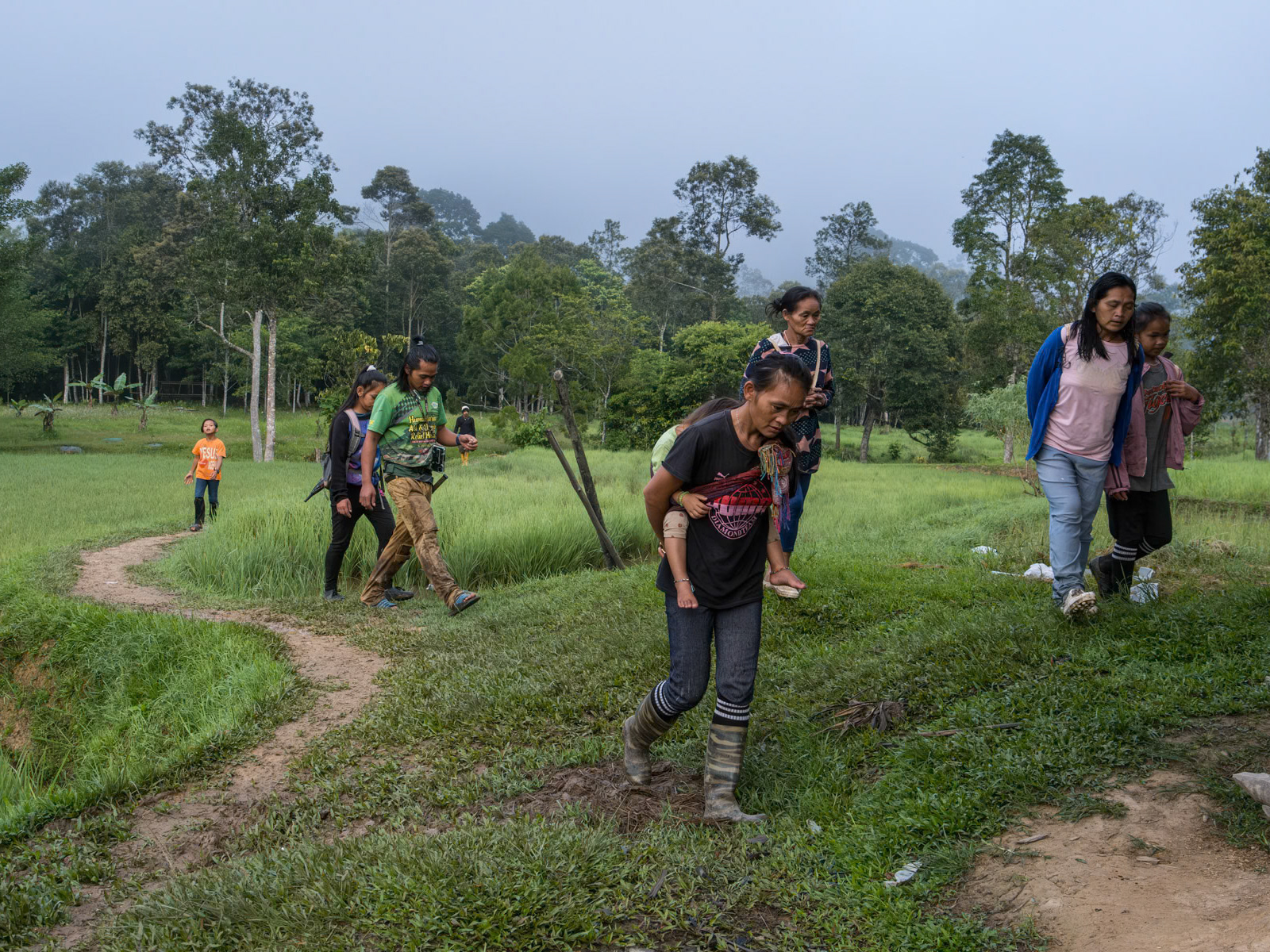More than eight years after the earthquake, tsunami, and one of the worst nuclear disasters in history, the Japanese prefecture of Fukushima is slowly attempting to return to normal life where possible. Government officials assert that most areas are now safe to return to, with radiation levels comparable to those in major cities worldwide. They claim that fresh vegetables and fish are safe to eat. However, the key challenge for authorities remains rebuilding trust among the local population, who have long accused the government of cover-ups and denial about the full scale of the disaster, especially in the aftermath of the nuclear meltdown.
The earthquake and tsunami of March 2011 caused over 16,000 deaths. The nuclear explosion at the Fukushima Daiichi power plant spread radioactive dust across a wide area, forcing over 160,000 people to evacuate their homes across 10% of the prefecture. Life in these areas came to a halt—agriculture, fishing, and all social and economic activity ceased, turning towns and villages into ghost towns.
In the immediate aftermath, a massive decontamination effort began and continues today. It is estimated that it will take several hundred years to fully decommission the Fukushima Daiichi plant.
While most evacuees have returned home, roughly 3% of the prefecture remains off-limits due to radiation, particularly the forests and towns closest to the plant. Okuma and Namie, two towns near the nuclear facility with pre-disaster populations of 11,500 and 21,000, respectively, were reopened in 2018 and 2019. However, only a small fraction of the pre-disaster population has returned—several hundred in Okuma and less than 1,000 in Namie.
Efforts to remove and replace contaminated soil and decommission buildings are ongoing, but the future remains uncertain. It is unclear whether many former residents will return after nearly a decade away, especially with minimal economic activity and few job opportunities for younger generations. Most buildings have been deemed unsafe, and construction waste, including potentially contaminated materials, is being removed from the area. The road into these towns is marked by traffic agents managing the movement of heavy trucks carrying this waste, symbolizing the slow, challenging path to recovery.

More than eight years after and earthquake, tsunami and one of the most severe nuclear accidents in history, the Japanese prefecture prefecture of Fukushima is trying to get slowly back to normal life where possible. Government officials claim that most areas are safe to return, that radiation levels are equivalent to major world cities and that fresh vegetables and fish are fine to eat. However, the authorities' main problem is to rebuild trust among the local population after being accused of so many coverups and denials about the exact magnitude of the disaster, during and in the aftermath of the nuclear meltdown and explosion. Whereas the earthquake and following tsunami in March 2011 killed 16,000 people. The subsequent nuclear reactor explosion sent radioactive dust over a wide area around the Daichi nuclear power plant, causing more than 160,000 people to abandon and evacuate their homes accross 10% of the Fukushima perfecture. All live, agriculture, fishing and social economical activity ceased in those territories, and many towns and villages became ghost towns in no-go areas. Shortly after the disaster, a massive decontamination effort was started and is presently still under way. It is estimated that several hundreds years will be needed to decommission and decontaminate the Daichi nuclear power plant site itself. Since the disaster most evacuees have gone back to their homes, except for an area of about 3% of the prefecture which remains officially off limits in surrounding forests and towns nearest to the nuclear plant. Okuma and Namie/Futaba, two towns with respectively 11,500 and 21,000 pre-disaster population, and where the nuclear plant is located, have in 2018/2019 been re-opened for people to return living. Only a fraction of the pre-disaster population has returned, few hundreds in Okuma and less than 1,000 in Namie. Workers continue relentlessly to remove and replace contaminated topsoil and other radioactive waste from decomissioned houses and buildings, so that evacuees can return and rebuild their lives. Will they return after having left the area almost 10 years ago is very doubtful, and with almost no economical activity it is impossible for the younger generation to find work. A traffic agent indicating when heavy trucks loaded with construction waste enter the road. Most buildings have been declared unsafe for living and are being brought down. The potentially contaminated building materials are being packed and driven outside the town. Namie, Fukushima Prefecture, Japan, October 2019
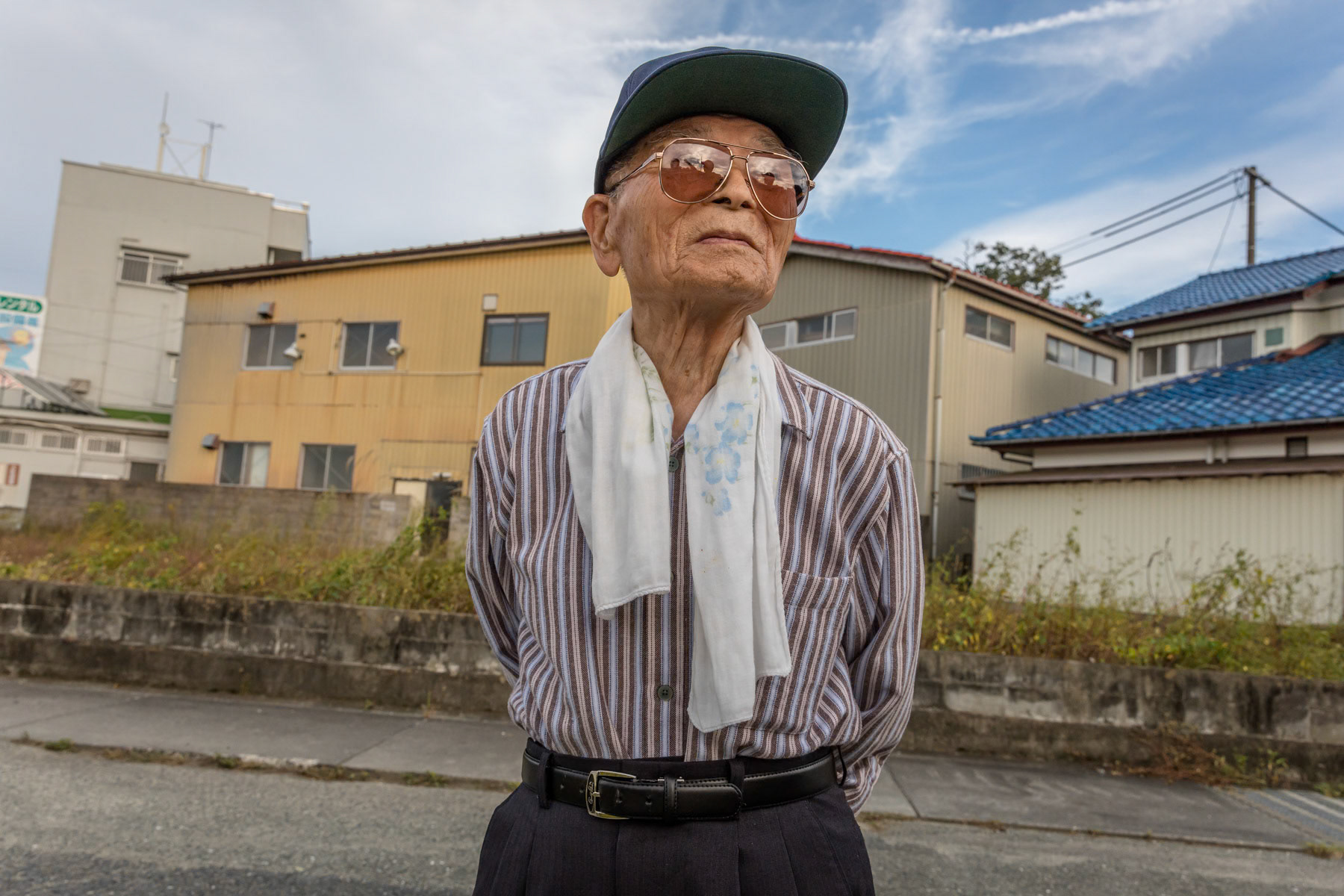
Ninety one year old resident of Namie who returned to the town in 2018. Before the 2011 Tsunami and the Fukushima Nuclear Power Plant meltdown more than 21,000 people lived in the town of Namie few Km from the power plant. Today, less than 1,000 have returned and most houses and buildings have been earmarked for destruction and removal of contaminated building materials. Namie, Fukushima Prefecture, Japan, October 2019

Abandoned restaurant that will soon be destroyed. Before the 2011 Tsunami and the Fukushima Nuclear Power Plant meltdown more than 21,000 people lived in the town of Namie few Km from the power plant. Today, less than 1,000 have returned and most houses and buildings have been earmarked for destruction and removal of contaminated building materials. Namie, Fukushima Prefecture, Japan, October 2019

A fisherman and his newly aquired boat. The fishing community has been gravely affected by the Tsunami and many died trying to save their boats. The surviving fishermen have been banned from fishing for many years after the nuclear catastrophy. Only in the past couple of years has fishing being allowed again under very stringent radiation controls. Soma fishing port, Fukushima Prefecture, Japan, October 2019
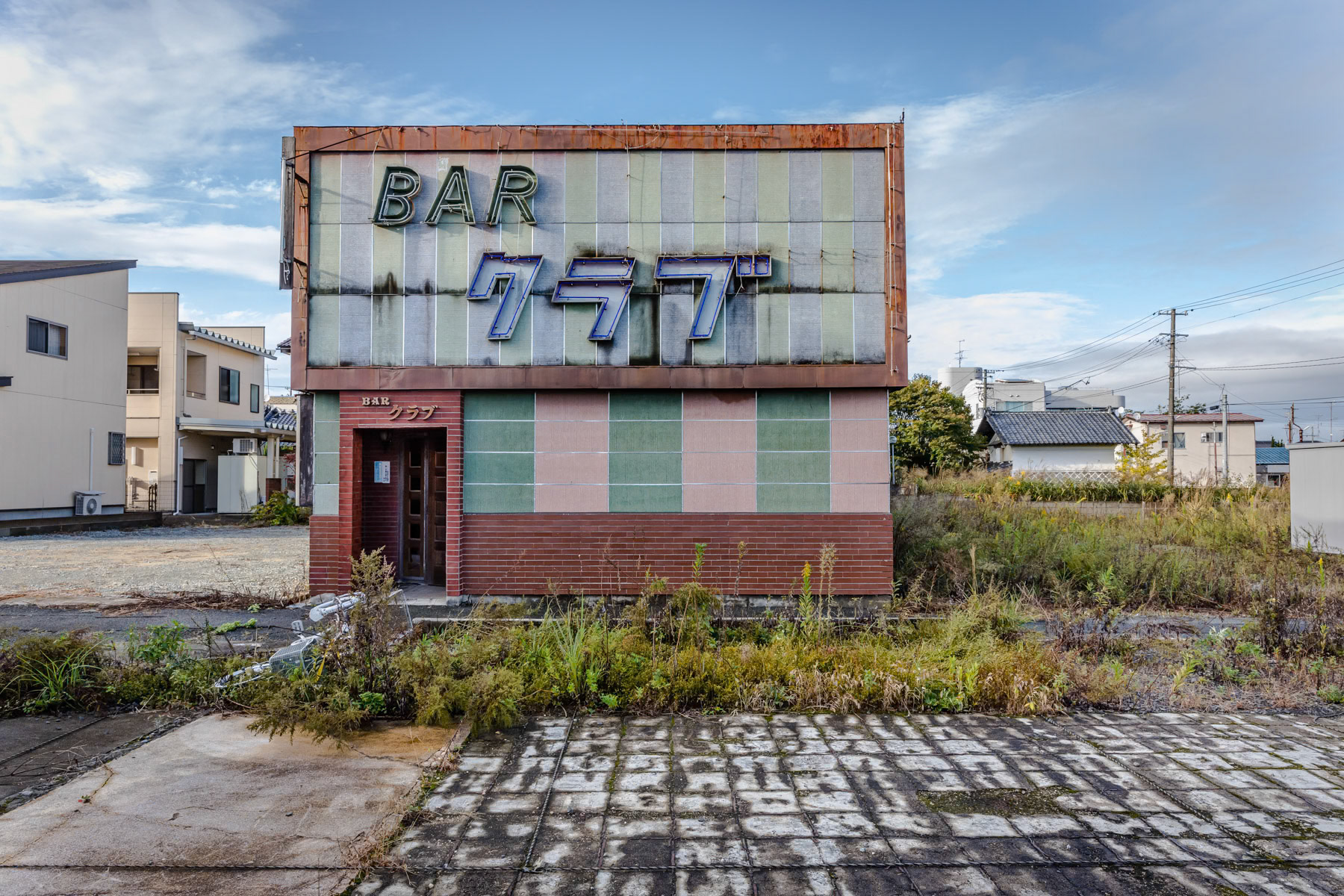
Namie and its ghost town feeling. Before the 2011 Tsunami and the Fukushima Nuclear Power Plant meltdown more than 21,000 people lived in the town of Namie few Km from the power plant. Today, less than 1,000 have returned and most houses and buildings have been earmarked for destruction and removal of contaminated building materials. Fukushima Prefecture, Japan, October 2019

Restaurant abandoned since March 2011, Namie, Fukushima Prefecture, Japan, October 2019

Tomioka port and its protective sea wall with Fukushima Daini Power Plant in the background. Contrary to the Daichi plant, Daini has been shut down in a controlled way and is in the long term phase of being decomissioned. Tomioka, Fukushima Prefecture, Japan, October 2019

A fishermen sorting their nets. The fishing community has been gravely affected by the Tsunami and many died trying to save their boats. The surviving fishermen have been banned from fishing for many years after the nuclear catastrophy. Only in the past couple of years has fishing being allowed again under very stringent radiation controls. Onamaha fishing port, Fukushima Prefecture, Japan, October 2019

Sealed off area along route 50 crossing the mountains. The entire area in the woods and mountains are no go zones as radiation levels are still to high. Those areas in the hinterland will most likely remain off limit forever. Route 50 between Namie and Katsurao. Fukushima Prefecture, Japan, October 2019

Sealed off area along route 50 used to store contaminated soil removed from newly accessible places. The entire area in the woods and mountains are no go zones as radiation levels are still to high. Those areas in the hinterland will most likely remain off limit forever. Route 50 between Namie and Katsurao. Fukushima Prefecture, Japan, October 2019

Radiation level indicator along route 50 crossing the mountains. The entire area in the woods and mountains are no go zones as radiation levels are still to high. Those areas in the hinterland will most likely remain off limit forever. Route 50 between Namie and Katsurao. Fukushima Prefecture, Japan, October 2019

Abandoned garage, idle since 11 March 2011 when an earthquake, a tsunami and a nuclear reactor meltdown obliterated the region. Namie, Fukushima Prefecture, Japan, October 2019

Abandoned houses and buildings along Route 6 that passes through the most affected and contaminated area around the Daichi nuclear power plant. Okuma, Fukushima Prefecture, Japan, October 2019

Construction workers involved in building sea wall along the coast in order to limit the catastrophic effects of a tsunami. Also the sea wall is built to protect the affected nuclear power plants along the coast that will require many years to be fully decommissioned. Tomioka Fishing port, opened in July 2019. Tomioka, Fukushima Prefecture, Japan, October 2019
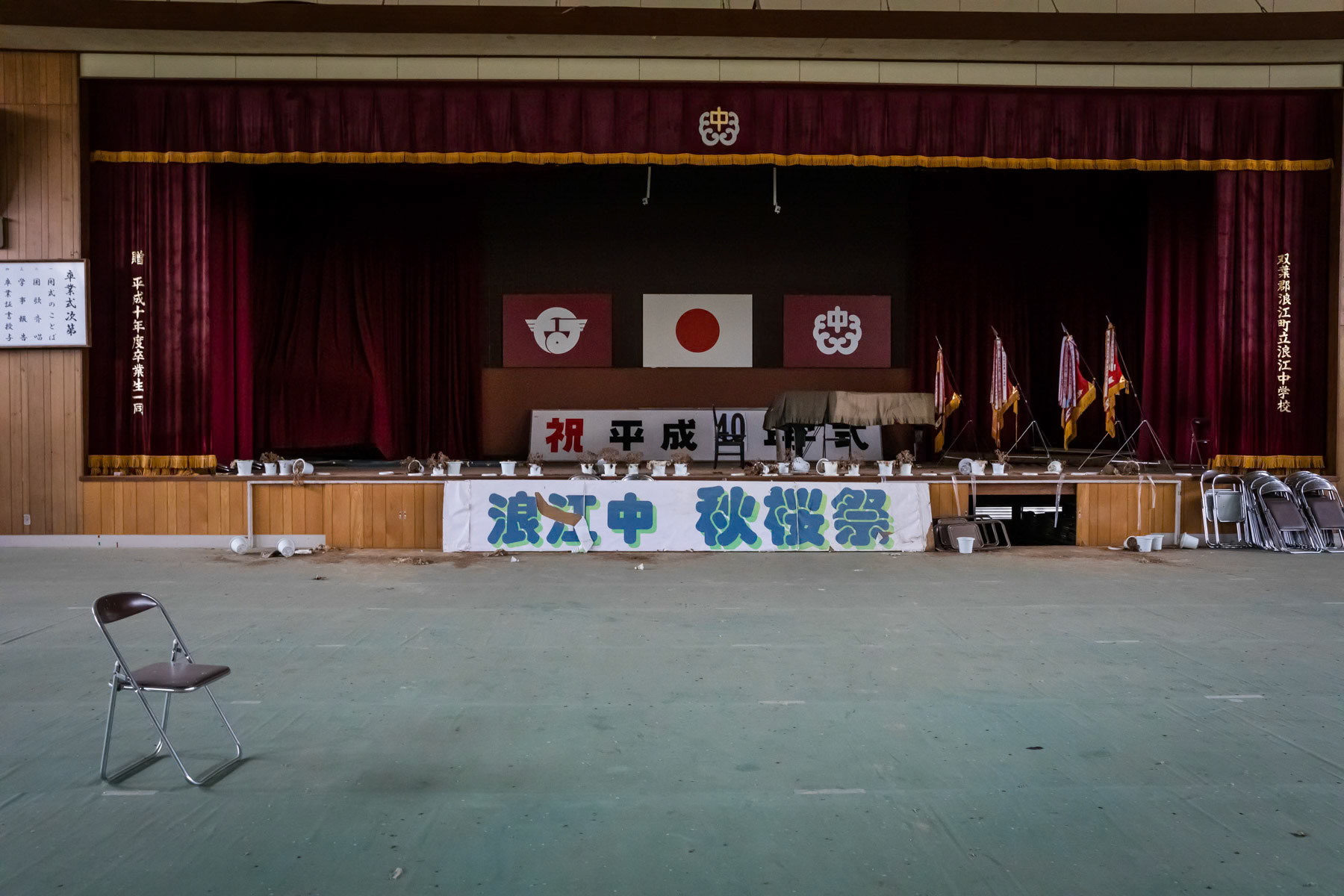
Namie high school. Fukushima Prefecture, Japan, October 2019
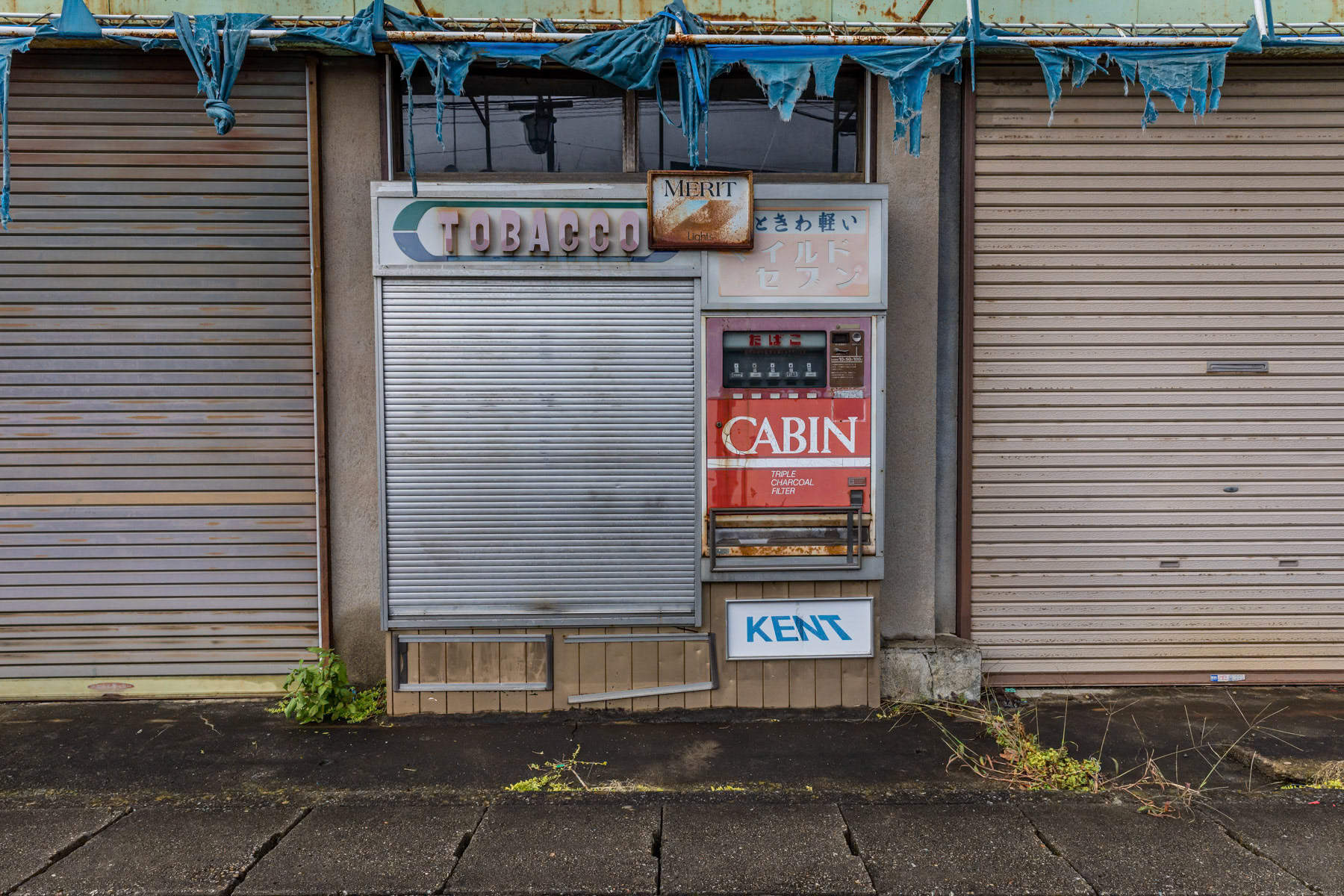
Before the 2011 Tsunami and the Fukushima Nuclear Power Plant meltdown more than 21,000 people lived in the town of Namie few Km from the power plant. Today, less than 1,000 have returned and most houses and buildings have been earmarked for destruction and removal of contaminated building materials. Namie, Fukushima Prefecture, Japan, October 2019

Waste lands along Route 6 that passes through the most affected and contaminated area around the Daichi nuclear power plant. Okuma-Namie road, Fukushima Prefecture, Japan, October 2019

Abandoned building along Route 6 that passes through the most affected and contaminated area around the Daichi nuclear power plant. Okuma, Fukushima Prefecture, Japan, October 2019

Greenhouse farm in Naimi as part of efforts to attrackt people to return to the town. The green houses and plantations have been partly destroyed after the passage of typhoon Hagibis a week earlier. Japan is frequently affected by earthquakes, tsunami and typhoons, challanging seriously the continuation of operating nuclear power plants in such areas. Namie, Fukushima Prefecture, Japan, October 2019

A fisherman cleaning his nets. The fishing community has been gravely affected by the Tsunami and many died trying to save their boats. The surviving fishermen have been banned from fishing for many years after the nuclear catastrophy. Only in the past couple of years has fishing being allowed again under very stringent radiation controls. Onamaha fishing port, Fukushima Prefecture, Japan, October 2019

Abandoned building along Route 6 that passes through the most affected and contaminated area around the Daichi nuclear power plant. Namie, Fukushima Prefecture, Japan, October 2019

Abandoned buildings and settlements along route 114 crossing the mountains. The entire area in the woods and mountains are no go zones as radiation levels are still to high. Those areas in the hinterland will most likely remain off limit forever. Fukushima Prefecture, Japan, October 2019

Namie and its ghost town feeling. Before the 2011 Tsunami and the Fukushima Nuclear Power Plant meltdown more than 21,000 people lived in the town of Namie few Km from the power plant. Today, less than 1,000 have returned and most houses and buildings have been earmarked for destruction and removal of contaminated building materials. Fukushima Prefecture, Japan, October 2019





